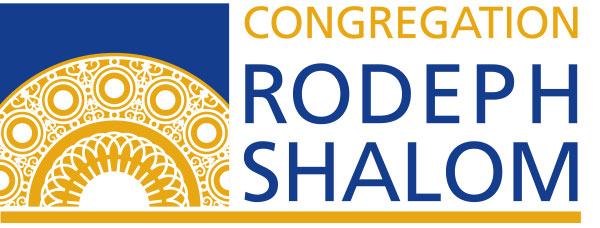This introduction to Philadelphia Jewish history comes from Temple University’s Murray Friedman Chair of American Jewish History and director of the Feinstein Center for American Jewish History, Dr. Lila Corwin Berman. Dr. Berman will speak on this topic at Synaplex Shabbat this Friday night.
On Leaving, Staying, and Returning: A View of Urban History from Jewish Philadelphia, by Lila Corwin Berman
One of the perennial themes of Jewish history and lore is movement. God commands Abraham lech lecha, “Go away from your land, from your birthplace, and from your father’s house, to the land that I will show you.” Driven by trade, by decree, by economic instability, by violence, by the desire for a better life, Jews have moved. Some historians and thinkers have argued that the constancy of migration in Jewish life has bred a sense of Jewish detachment from land, territory, and place. If Jews knew that chances were that next year or the year after or within the next generation they would move, then why would they feel connected to the space in which they lived?
Yet Jewish history also chronicles Jews’ efforts to settle and create homes. Indeed, Jews have cared deeply about where they live, and, in many cases, they have struggled mightily with the implications of moving from one place to another. Community, politics, culture, and spirituality change amidst new landscapes. Migration provides a chance for reinvention, but it also is a source of loss. By the middle decades of the twentieth century, the moves American Jews made most frequently were ones from city to suburb. In fact, just as Jews were integral to the making of the modern American city, they also played a role, albeit complicated and often reluctant, in its unmaking. Their journeys to the far reaches and, eventually, suburbs of American cities helped cement Jewish membership in the American middle class. These same journeys, however, introduced a troubling set of political, spiritual, and cultural questions. What were the repercussions of leaving city space at the same moment that countless other whites were abandoning cities? How did Jewish politics and culture weather Jews’ exit from urban America? What happened to the sacred places that had marked their urban existences, and how were new sacred sites established? Most generally, I am driven to understand how Jews thought about their migratory patterns as Jews, as Americans, and as political and spiritual (or not spiritual) beings.
Perhaps history prepared Jews to move and move frequently. Yet each moment of movement presents a Jewish crisis, just as it may also present a renaissance. As Jews left urban American centers for suburbs, they experienced loss and longing alongside vital re-creation. The cities they left similarly experienced periods of crisis and often ones of renaissance. In studying the two together—Jews and the cities they left—we gain new perspectives on old Jewish patterns.
BIO:
Lila Corwin Berman is Associate Professor of History at Temple. She holds the Murray Friedman Chair of American Jewish History and directs the Feinstein for American Jewish History. Berman received her B.A. from Amherst and her Ph.D. from Yale. She is author of Speaking of Jews: Rabbis, Intellectuals, and the Creation of an American Public Identity (2009). The book has been awarded recognition by the Center for Jewish History, the National Foundation for Jewish Culture, and the Jewish Book Council. Berman is currently working on a new book called Exit: Jews, Race, and the Politics of Migration that traces Jews’ journeys away from urban America in the postwar years. She has also published articles in Jewish Social Studies, American Jewish History, Religion and American Culture, the Forward, and Sh’ma. City College Center University
